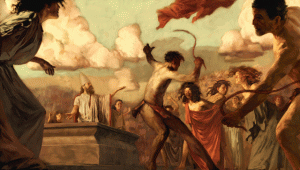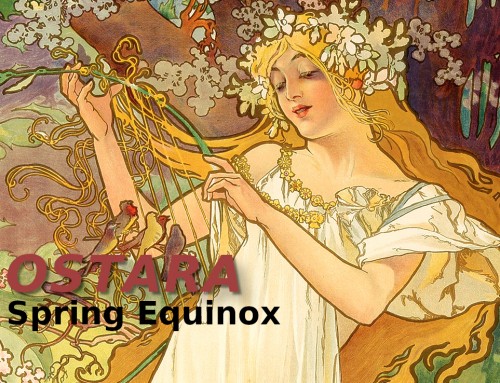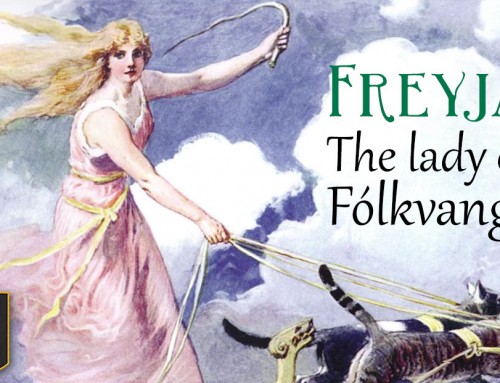Lupercalia is a uniquely Roman celebration which took place on the 15th of February, and it’s origins date back to the days of Romulus, when Rome was nothing more than a few shepherds living on a hill known as Palantine, surrounded by wilderness teeming with wolves. Faunus Lupercus , protector of flocks against wolves, is likely the god being honored. The word lupus is Latin for wolf, or perhaps Faunus, the god of agriculture and shepherds. Others suggest it was Rumina, the goddess whose temple stood near the fig tree under which the she-wolf suckled Romulus and Remus.
According to legend, the story of Romulus and Remus begins with their grandfather Numitor, king of the ancient Italian city of Alba Longa. He was ousted by his brother Amulius. Numitor’s daughter, Rhea Silvia, was made a Vestal Virgin by Amulius and forbidden to marry since her children would be rightful heir to the throne. Mars fell in love with her and she gave birth to twin sons. Fearing that the boys would grow up and seek revenge, Amulius had them placed in a basket and thrown into the freezing flooded waters of the River Tiber. When the waters receded, the basket came ashore on Palantine Hill. They were found by a she-wolf who, instead of killing them, nurtured and nourished them with her milk.
The twins were found by the King’s shepherd, Faustulus, and he and his wife took them in, naming them Romulus and Remus. They grew up to be bold, strong young men, and eventually led a band of shepherds in an uprising against Amulius, killing him and rightfully restoring the kingdom to their grandfather.
Deciding to found a town of their own, Romulus and Remus chose the sacred place where the she-wolf had nursed them. Romulus began to build walls on Palatine Hill, but Remus laughed because they were so low. Remus mockingly jumped over them, and in a fit of rage, Romulus killed his brother. Romulus continued the building of the new city, naming it Roma after himself.
Since February occurred later on the ancient Roman calendar than it does today, Lupercalia was held in the spring as a festival of purification and fertility. Each year on February 15, the Luperci priests gathered on Palantine Hill at the cave of Lupercal, the rediscovered den in which the boys were raised. Vestal virgins brought sacred cakes made from the first ears of last year’s grain harvest to the fig tree. Two naked young men, assisted by the Vestals, sacrificed a dog and a goat at the site. The blood was smeared on the foreheads of the young men and then wiped away with wool dipped in milk.
The youths then donned loincloths made from the skin of the goat and led groups of priests around the pomarium, the sacred boundary of the ancient city, and around the base of the hills of Rome. The occasion was happy and festive. As they ran about the city, the young men lightly struck women along the way with strips of the goat hide. It is from these implements of purification, or februa, that the month of February gets its name. This act supposedly provided purification from curses, bad luck, and infertility.
The Lupercalia festival lived on long after Palentine Hill became the seat of Rome,. Roman armies took the Lupercalia customs with them as they invaded France and Britain. One of these was a lottery where the names of available maidens were placed in a box and drawn out by the young men. Each man accepted the girl whose name he drew as his love – for the duration of the festival, or sometimes longer.
As Christianity began to systematically dismantle the pagan pantheons, it frequently replaced the festivals of the pagan gods with more ecumenical celebrations. It was easier to convert the local population if they could continue to celebrate on the same days… they would just be instructed to celebrate different people and ideologies..
Lupercalia, with its lover lottery, had no place in the new Christian order. In the year 496 AD, Pope Gelasius did away with the festival of Lupercalia, citing that it was pagan and immoral. He chose Valentine as the patron saint of lovers, who would be honored at the new festival on the fourteenth of every February. The church decided to come up with its own lottery and so the feast of St. Valentine featured a lottery of Saints. One would pull the name of a saint out of a box, and for the following year, study and attempt to emulate that saint.
The Feast of St. Valentine and the saint lottery lasted for a couple hundred years, but the church just couldn’t rid the people’s memory of Lupercalia. Two centuries later the pagan ceremonies were regaining favor and echoes of the Lupercalia celebrations could be found throughout what had been the Roman empire, the British Isles, France and the Mediterranean area.
In time, the church gave up on Valentine all together. Protestant churches don’t recognize saints at all, and very few Catholic churches choose to celebrate or observe the life of St. Valentine on a ‘Valentine’s Sunday’. The lottery finally returned to coupling eligible singles in the 15th century. This union varied in its nature depending on the country and each had traditional ways in which the couples could express the relationship and these Pagan customs were still common in the 1400’s and even into the 1500’s.
During the medieval days of chivalry, the single’s lottery was very popular. The names of English maidens and bachelors were put into a box and drawn out in pairs. The couple exchanged gifts and the girl became the man’s valentine for a year. He wore her name on his sleeve and it was his bounded duty to attend and protect her. The ancient custom of drawing names on the 14th of February was considered a good omen for love, though arguably, you could say the very first valentine cards were the slips of paper bearing names of maidens the early Romans first drew.








